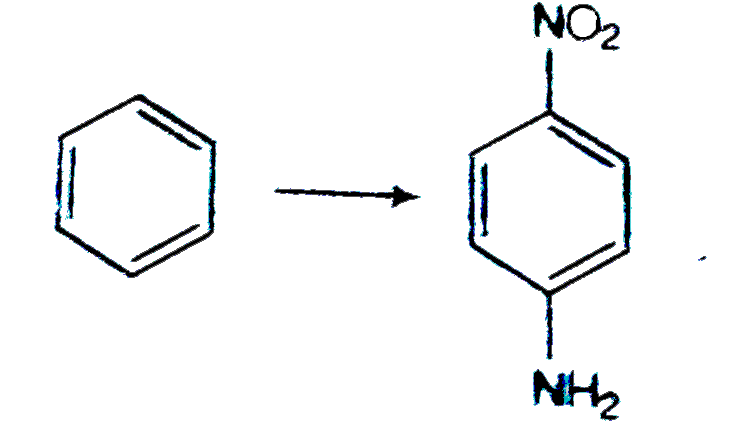How will you bring out the following conversions ?
Ethyne to methane
To convert ethyne (C2H2) to methane (CH4), we can follow a series of chemical reactions. Here’s a step-by-step breakdown of the conversion:
Step 1: Acidic Hydrolysis of Ethyne
1. React Ethyne with Water (H2O) in the presence of Mercury(II) Sulfate (HgSO4) and Sulfuric Acid (H2SO4).
- This reaction involves the addition of water across the triple bond of ethyne, leading to the formation of an intermediate compound.
- The reaction can be represented as:
C2H2+H2OHgSO4,H2SO4−−−−−−−−→CH3CHO
- The product formed is ethanal (acetaldehyde), which is CH3CHO.
Step 2: Oxidation of Ethanal
2. Oxidize Ethanal (CH3CHO) using Potassium Dichromate (K2Cr2O7) in an acidic medium (H+).
- This oxidation converts ethanal to acetic acid (ethanoic acid).
- The reaction can be represented as:
CH3CHOK2Cr2O7,H+−−−−−−−−→CH3COOH
- The product formed is acetic acid (CH3COOH).
Step 3: Decarboxylation of Acetic Acid
3. Decarboxylate Acetic Acid (CH3COOH) using Sodium Hydroxide (NaOH) and Calcium Oxide (CaO).
- This step involves the removal of carbon dioxide (CO2) from acetic acid, resulting in the formation of methane.
- The reaction can be represented as:
CH3COOHNaOH, CaO−−−−−−−→CH4+CO2
- The final product formed is methane (CH4).
Summary of Steps
1. Ethyne + H2O (HgSO4, H2SO4) → Ethanal (CH3CHO)
2. Ethanal + K2Cr2O7 (H+) → Acetic Acid (CH3COOH)
3. Acetic Acid + NaOH, CaO → Methane (CH4)
1. React Ethyne with Water (H2O) in the presence of Mercury(II) Sulfate (HgSO4) and Sulfuric Acid (H2SO4).
- This reaction involves the addition of water across the triple bond of ethyne, leading to the formation of an intermediate compound.
- The reaction can be represented as:
C2H2+H2OHgSO4,H2SO4−−−−−−−−→CH3CHO
- The product formed is ethanal (acetaldehyde), which is CH3CHO.
2. Oxidize Ethanal (CH3CHO) using Potassium Dichromate (K2Cr2O7) in an acidic medium (H+).
- This oxidation converts ethanal to acetic acid (ethanoic acid).
- The reaction can be represented as:
CH3CHOK2Cr2O7,H+−−−−−−−−→CH3COOH
- The product formed is acetic acid (CH3COOH).
3. Decarboxylate Acetic Acid (CH3COOH) using Sodium Hydroxide (NaOH) and Calcium Oxide (CaO).
- This step involves the removal of carbon dioxide (CO2) from acetic acid, resulting in the formation of methane.
- The reaction can be represented as:
CH3COOHNaOH, CaO−−−−−−−→CH4+CO2
- The final product formed is methane (CH4).
1. Ethyne + H2O (HgSO4, H2SO4) → Ethanal (CH3CHO)
2. Ethanal + K2Cr2O7 (H+) → Acetic Acid (CH3COOH)
3. Acetic Acid + NaOH, CaO → Methane (CH4)
Topper's Solved these Questions
- HYDROCARBONS Book:ICSEChapter:HYDROCARBONS Exercise:ESSAY (LONG ANSWER) TYPE QUESTIONS
Explore 28 Videos
- HYDROCARBONS Book:ICSEChapter:HYDROCARBONS Exercise:OBJECTIVE (MULTIPLE CHOICE) TYPE QUESTIONS
Explore 71 Videos
- HYDROCARBONS Book:ICSEChapter:HYDROCARBONS Exercise:VERY SHORT ANSWER TYEP QUESTIONS
Explore 47 Videos
- EQUILIBRIUM Book:ICSEChapter:EQUILIBRIUM Exercise:NCERT TEXT-BOOK EXERCISE
Explore 109 Videos
- HYDROGENBook:ICSEChapter:HYDROGENExercise:NCERT TEXT-BOOK EXERCISE (With Hints and Solutions)
Explore 53 Videos
Similar Questions
How will you bring out the following conversions ?
Ethyne to ethane
View SolutionHow will you bring about the following conversions ?

View SolutionHow will you bring out the following conversions ?
Ethene to ethyne
View SolutionHow will you bring out the following conversions ?
Ethane to ethyne
View SolutionHow will you bring out the following conversions ?
Ethyne to but-2-yne
View SolutionHow will you carry out the following conversion?

View SolutionHow will you carry out the following conversion?

View SolutionHow will you carry out the following conversion?

View SolutionHow will you carry out the following conversion?

View SolutionHow will you carry out the following conversion?

View Solution

